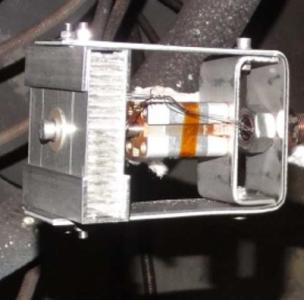Multi-Disciplinary Design and Breadboarding of Technologies for Early Break-up of Spacecraft During Re-entry

The objective of this activity is to identify, breadboard and perform initial tests on the most promising technologies and concepts, in the field of passive components, active mechanisms, joining techniques to support the implementation of Space Debris Mitigation measures in the area of Design for Demise.
There is an increased attention to safeguarding Earth's orbital environment, as reflected by the number of relevant regulations that are being set forward. ESA has published an update of the Space Debris Mitigation (SDM) Policy for Agency Projects in March 2014. It is expected that in the near future more countries will adopt mandatory SDM requirements. ESA's Clean Space initiative has been promoting several engineering activities and technology developments at spacecraft platform level. Clean Space aims to support the compliance with the SDM requirements, hence improving the competitiveness of European industry in the global market Satellites operating in low Earth orbit (LEO) are the most impacted ones by the SDM requirements due to the de-orbit and re-entry requirements. In the case of an uncontrolled re-entry into the atmosphere, the spacecraft may not completely demise during this phase and its parts could reach the ground, posing a casualty risk. Furthermore, the activities carried out within the CleanSat initiative, in which European technology developments for space debris mitigation are coordinated, have shown that all Large Scale Integrators identified increased spacecraft demisability to be a key solution for LEO platforms to ensure compliance to the SDM requirements. Simulations have shown that an early break-up of the main structure of a spacecraft better exposes its parts to the aerothermodynamic forces and increases demisability. Previous studies have indicated that mechanisms and joining techniques of spacecraft main structures play a significant role in initializing this break-up event of the main structure. As a consequence, the following technologies shall be addressed : passive components / materials (e.g. based on shape memory alloys), active mechanisms (e.g. launch locks, active panel opening), joining techniques and joints (e.g. cleats, adhesives, bolted connection, rivet, welds, thermal expansion joints). For each of the technologies listed above, conceptual designs shall be elaborated, requirements for necessary technology developments shall be defined, and a breadboard of the selected technologies developed and tested. In addition, a comprehensive technology roadmap shall be derived for each selected technology. In detail, the activity includes the following tasks: - Establish a database of typical joining techniques and joints, active mechanisms and passive components / materials - Derive test conditions from re-entry simulation campaign results - Test current joining techniques and assess the impact of joints on the break-up event of spacecraft (e.g. through plasma wind tunnel testing) - Based on system level analysis of LEO platforms, establish a set of requirements for joining techniques as well as for the design of active mechanisms and passive components / materials to break up spacecraft structures during re-entry. - Establish possible concepts for joining techniques and joints, active mechanisms and passive components / materials - Perform a trade-off between and derive requirements for all identified concepts w.r.t. system level impact to recommend and select technologies - Develop and test breadboards for the selected technologies - Derive requirements and technology roadmaps for the technologies identified.
